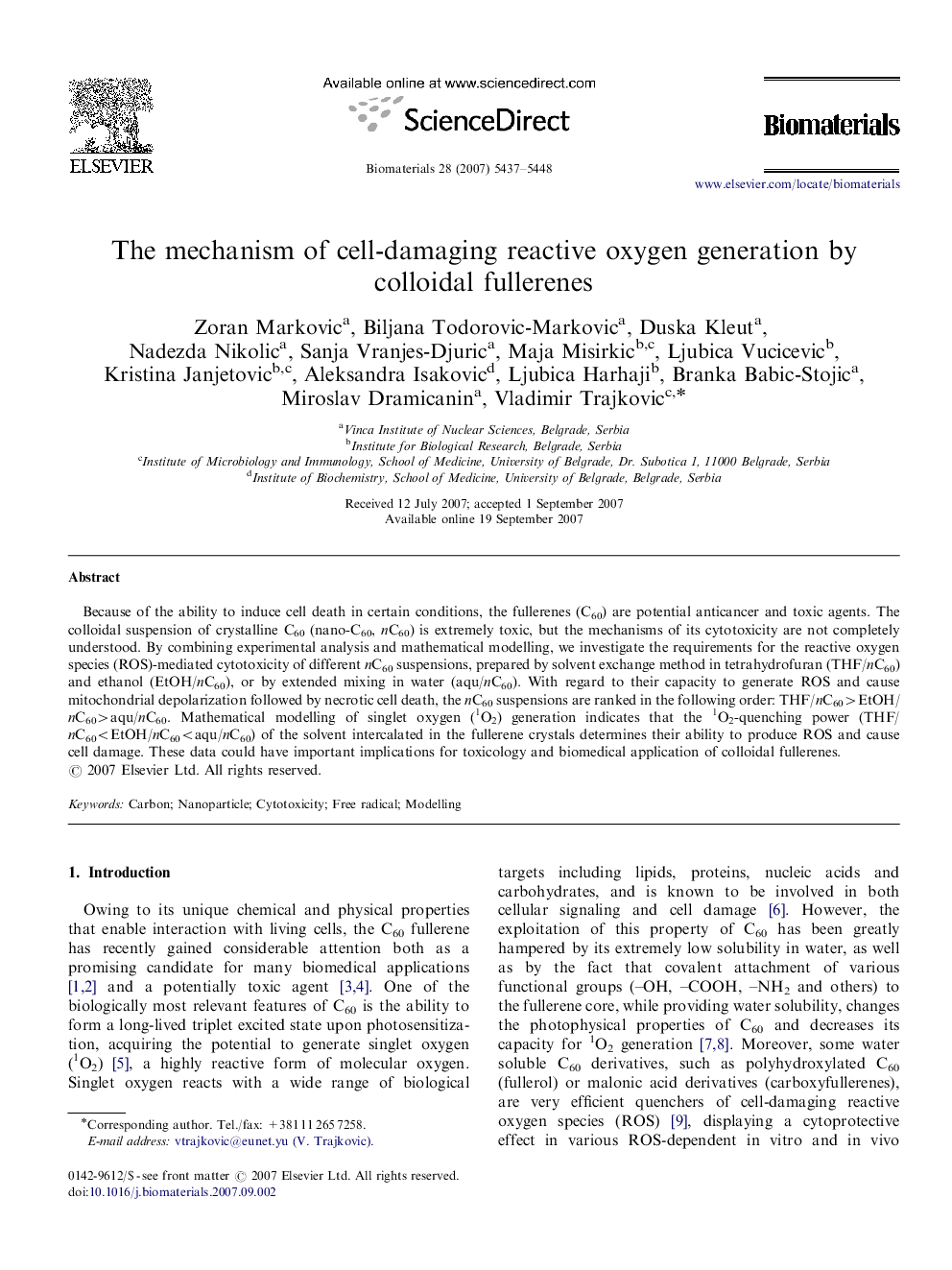| Article ID | Journal | Published Year | Pages | File Type |
|---|---|---|---|---|
| 10349 | Biomaterials | 2007 | 12 Pages |
Because of the ability to induce cell death in certain conditions, the fullerenes (C60) are potential anticancer and toxic agents. The colloidal suspension of crystalline C60 (nano-C60, nC60) is extremely toxic, but the mechanisms of its cytotoxicity are not completely understood. By combining experimental analysis and mathematical modelling, we investigate the requirements for the reactive oxygen species (ROS)-mediated cytotoxicity of different nC60 suspensions, prepared by solvent exchange method in tetrahydrofuran (THF/nC60) and ethanol (EtOH/nC60), or by extended mixing in water (aqu/nC60). With regard to their capacity to generate ROS and cause mitochondrial depolarization followed by necrotic cell death, the nC60 suspensions are ranked in the following order: THF/nC60>EtOH/nC60>aqu/nC60. Mathematical modelling of singlet oxygen (1O2) generation indicates that the 1O2-quenching power (THF/nC60
